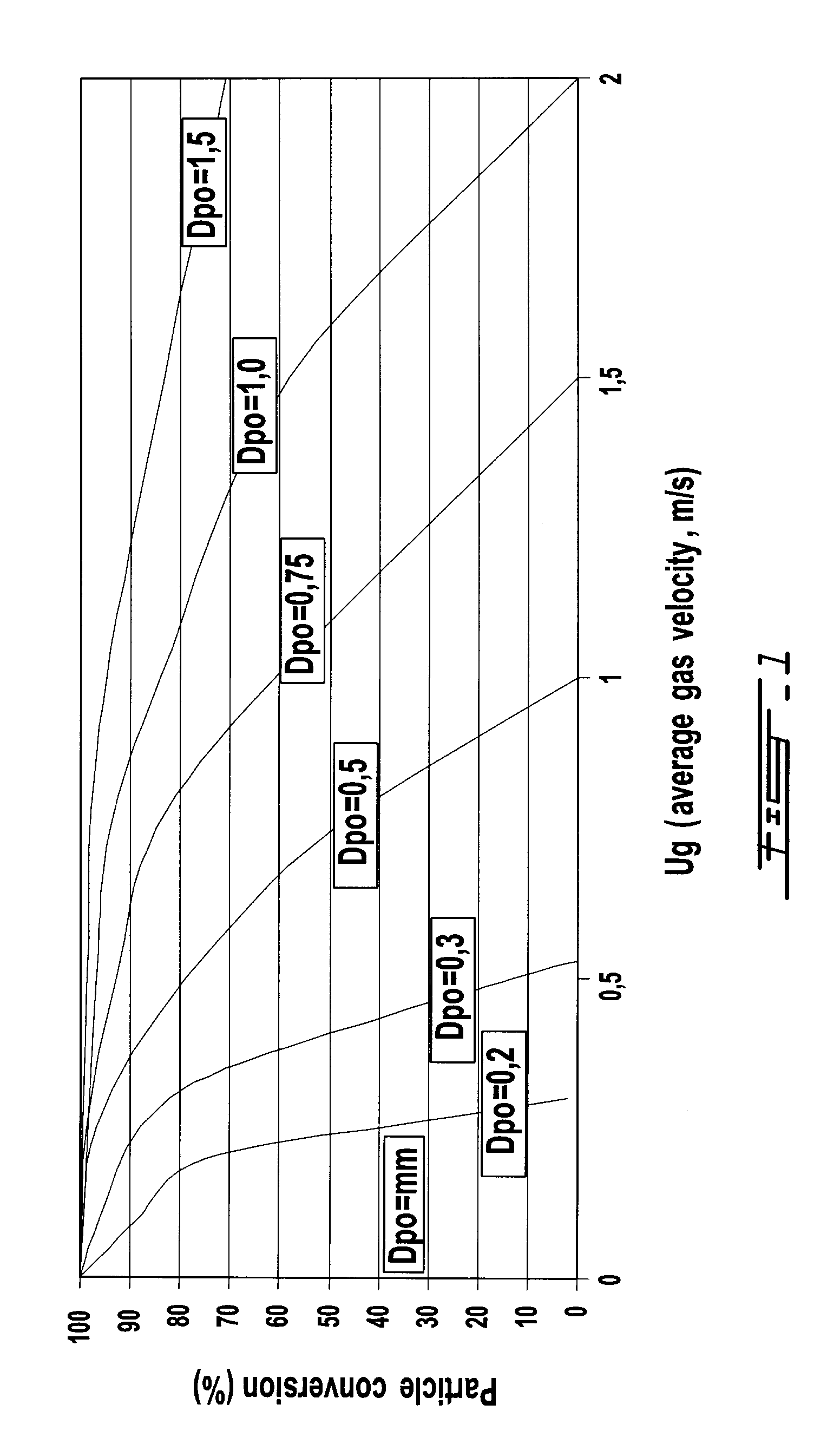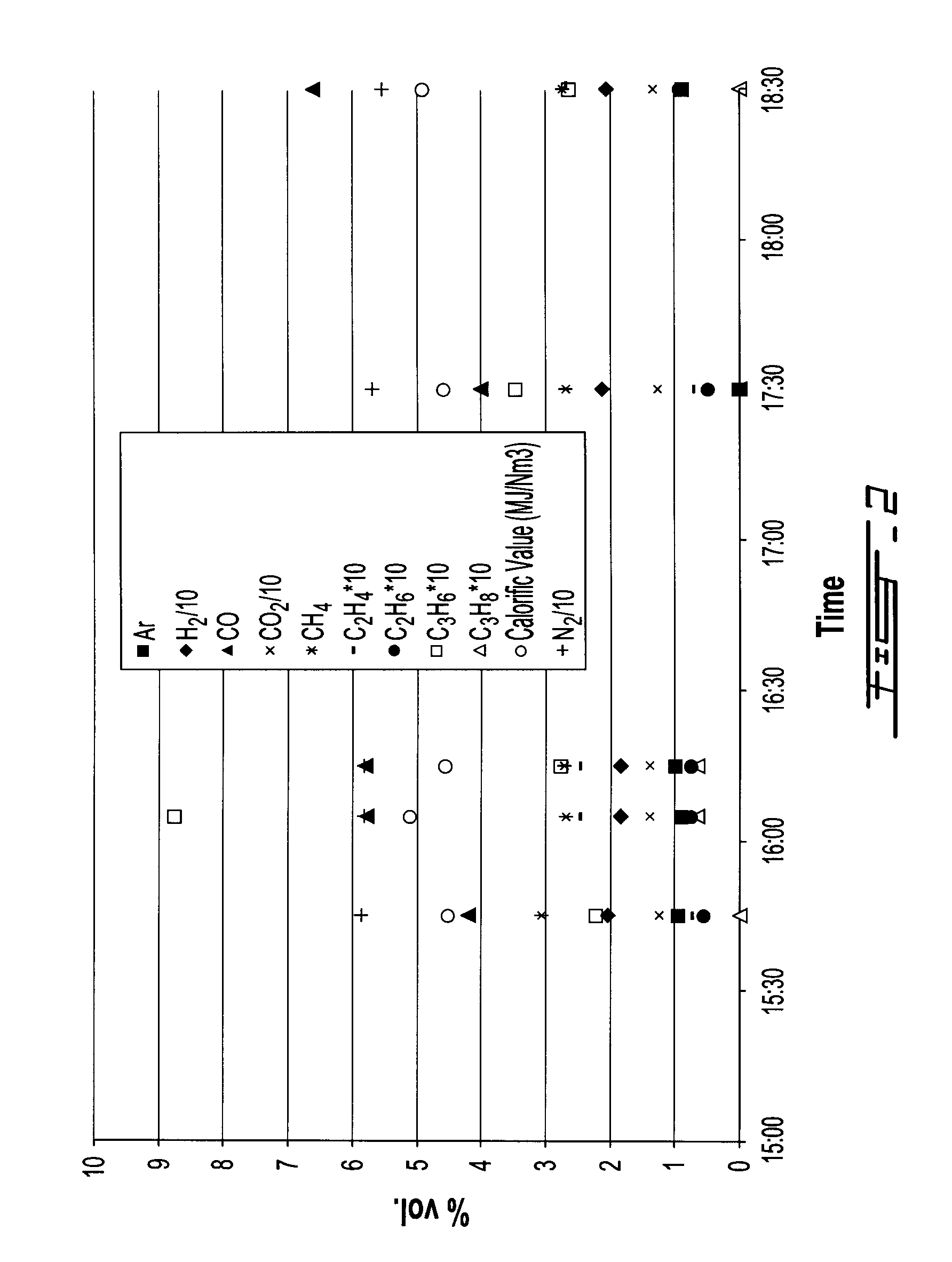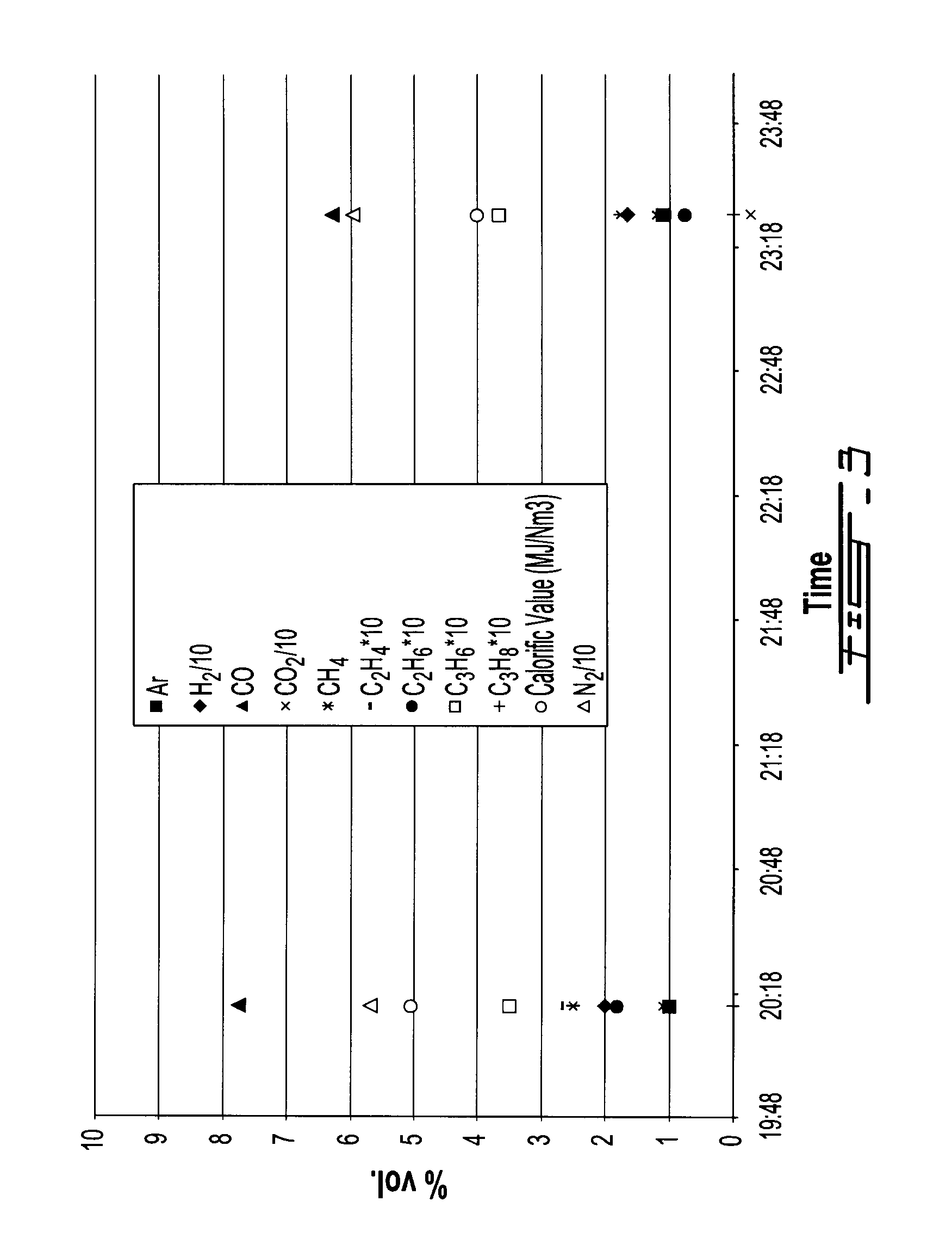Method for low-severity gasification of heavy petroleum residues
a petroleum residue and gasification method technology, applied in the direction of combustible gas production, combustible gas purification/modification, hydrogen separation using liquid contact, etc., can solve the problem of refractory present, vanadium may also be a problem, and the cost of heavy oil extraction is therefore significantly dependent on the cost of steam produced
- Summary
- Abstract
- Description
- Claims
- Application Information
AI Technical Summary
Benefits of technology
Problems solved by technology
Method used
Image
Examples
example 1
Method Verification Test 1
[0092]Test 1 was performed in a pilot plant unit located in Sherbrooke, Quebec, Canada, which is briefly described below.
[0093]The pilot plant unit has a nominal capacity of approximately 100 kg / h of petcoke. The fluid bed reactor of the unit is ENERKEM's design. The fluid bed section of the reactor has an internal diameter of 38 cm (15 in) and a height of 3.5 m (138 in). The freeboard has an internal diameter of 63.5 cm (25 in) and a height of 1.4 m (54.5 in). The transition zone is conical and has a 60 degree angle. The nozzle plate has 7 nozzles equipped with 3 holes each (air velocities through the holes are in the 70 to 100 m / s range).
[0094]The feedstock is transferred by gravity through two lock hoppers equipped with interconnecting sliding gate valves. From the second lock hopper, the solids move through a rotary valve that controls the solids flow. From the rotary valve, the solids fall onto a screw feeder that rapidly transfers the feedstock direct...
example 2
Method Verification Test 2
[0110]The composition and energy content of the petcoke used in Test 2 were the same as in Test 1 (Example 1).
[0111]405 kg of petcoke, with a granulometry ranging between 0.1 and 2 mm, were gasified at the pilot plant at 800° C., 1.5 atm, over 4 h in the presence of 674.0 Rm3 air (R corresponding to 25° C., 1 atm; i.e. 800.3 kg air), 34.43 kg water (as moisture in petcoke, i.e. 8.5% of 405 kg), and 172 kg added steam. Alumina was used as fluidizing medium and the feed rate of petcoke into the gasifier was of 101.3 kg / h.
[0112]1338.5 Rm3 of syngas (i.e. 1379.8 kg dry gas and 27.6 kg water) were produced. The specific composition of the syngas obtained in Test 2 is given in Example 3 below. The syngas had a HHV of 4.4 MJ / Rm3 for Test 2.
[0113]In Test 2, the equivalent ratio λ is about 0.16, the weight ratio of steam to feedstock is about 0.42 and the weight ratio of liquid water to feedstock is about 0.085.
[0114]With 331.7 kg of carbon in the petcoke feedstock ...
example 3
Tests 1 and 2 Combined
[0116]These data were developed during a sampling / analysis campaign carried out during Tests 1 and 2, presented in Examples 1 and 2, respectively. The samplings were made at different stages of the method, for the syngas, the flue gas and the solid residues.
Syngas Sampling
[0117]The syngas sampling was conducted after its passage through the cyclones and two-loop scrubbing system ending with the demister, and before the combustion chamber, and analysis of samples was performed by standard Gas Chromatography (GC) methods at given times during the tests.
[0118]FIGS. 2 and 3, as well as Table 6 below, clearly show that a stable syngas composition is obtained throughout the 4 h tests. Table 6 gives the syngas average composition for each test.
TABLE 6TypesTest 1Test 2N257.857.8Ar0.81H21918.3CO5.97.7CO21312.3CH42.82.2C2H40.20.2C2H60.10.1C3H60.30.4C3H80.00.0CxHy0.00.0
Flue Gas Sampling
[0119]The flue gas sampling was conducted at the stack, following the...
PUM
 Login to View More
Login to View More Abstract
Description
Claims
Application Information
 Login to View More
Login to View More - R&D
- Intellectual Property
- Life Sciences
- Materials
- Tech Scout
- Unparalleled Data Quality
- Higher Quality Content
- 60% Fewer Hallucinations
Browse by: Latest US Patents, China's latest patents, Technical Efficacy Thesaurus, Application Domain, Technology Topic, Popular Technical Reports.
© 2025 PatSnap. All rights reserved.Legal|Privacy policy|Modern Slavery Act Transparency Statement|Sitemap|About US| Contact US: help@patsnap.com



